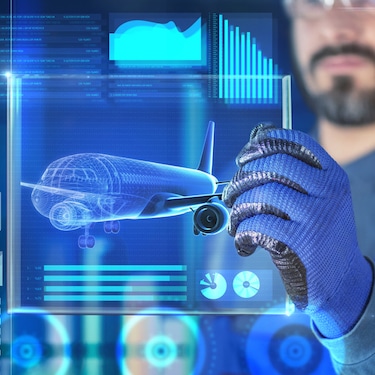
In the aerospace and defense sector, sustainability or post-delivery support for a program has long been part of the procurement process. Over the last 18 months as Covid has transformed industries by disrupting operations and supply chains, post-delivery support has become an issue in all forms of manufacturing and asset-intensive industries. While the primary tool enterprises use to monitor and manage ongoing support of their products will vary, every manufacturer must now consider each of the lifecycle elements as part of their offering. Specifically, this includes how best to maintain, repair, and overhaul (or in some industries, operate) referred to as the MRO process. Here are a few MRO 2022 predictions on how the industry will transform over the coming year.
Once a term used primarily by accountants and procurement specialists for a spending class, MRO is now a critical business process in many industries. Effective MRO processes can be the difference between profitable operations or business failure. Being able to support a strong MRO program can differentiate you as a supplier as well, unlocking the ability to win new business.
At its heart, MRO is about maintenance and maintainability. For the last few years maintenance has been focused on using technology to reduce downtime and eliminate failures. With artificial intelligence and machine learning (AI/ML) becoming readily accessible, look to see greater utilization of AI in the maintenance field as the next killer app for the technology. In 2022, AI will increase its presence at the heart of maintenance performance programs. MRO solutions will then have to keep pace with industry demands.
MRO Is More Than an Accounting Term
MRO has been around ever since maintenance departments were formed and businesses started to track the cost of repairs. Since that time, MRO has been a budget item to be managed and minimized. But over the last 5-10 years, there has been a growing shift to consider how to better manage and execute this process. There is considerable discussion in the industry on what digitalization options now exist that can have a significant financial impact on the full lifecycle of costs that are involved.
Much of this recognition has been because technology has allowed us to break down many organizational silos. As these silos began to fall, MRO has come to be thought of as a vital part of understanding and controlling the total lifecycle cost of a program, system, or piece of equipment.
MRO also performs a vital role by better managing data lifecycles, as explained in this article, Why Traceability is Essential to Offering Enhanced Field Service and MRO.
Harvesting Low Hanging Fruit
For the last several years, the number one application area for AI in manufacturing has been in preventative and predictive maintenance (PM and PdM). This is because reliability engineering provides the basis for PdM. As the Industrial Internet of Things (IIoT) has made more data readily available about equipment and its performance, AI tools now have access to more data that can be used with reliability models to deliver quick and significant results. This low-hanging fruit of PdM established the initial value of AI.
More to Come – MRO Predictions in 2022
As Covid-driven upsets to labor markets and supply chains are expected to continue into 2022, businesses will continue to focus on technology to help them manage costs and maintain operability. Since MRO is the embodiment of those objectives, there is almost a certainty that it will become the focus of senior management in the new year.
So, when you are looking at what enterprise software options can help you navigate the uncertainties of the next year, make sure that it can support your MRO efforts. Also, make sure it can work with and leverage technologies like AI and ML to ensure you can derive optimum performance and equipment availability to move MRO into an operational core competency instead of just an accounting bucket.

